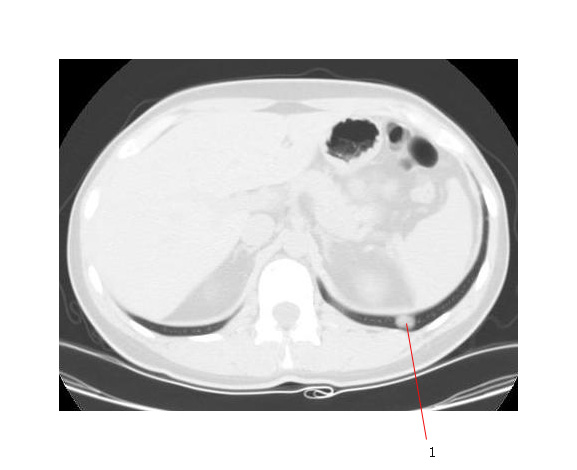Ewing sarcoma (ES):
- Invades locally with bone destruction, involvement of adjacent soft tissues and intramedullary spread.
- Ewing sarcoma of bone rarely spreads to adjacent lymph nodes. This is more commonly seen in a primary Ewing sarcoma arising in soft tissues (extra-osseous Ewing sarcoma).
- Distant metastases - almost always hematogenous are common
- Most cases of ES have microscopic (clinically undetectable) spread at diagnosis.
- 25 - 30% of patients have clinically detectable metastatic disease at presentation.
- If Ewing sarcoma occurs in a location (parameningeal or spinal) where there is invasion of the CSF pathways, leptomeningeal spread may occur.
Summary of ES routes of spread:
| Local |
|
Distant |
|
Most common sites for ES metastatic disease:
| Site | Proportion of Metastases |
Lung |
40 - 50% |
Bone |
25 - 30% |
Bone marrow |
10% |
The CT below shows a pulmonary metastatic deposit in a young woman with ES (#1 - the small round mass in the left costophrenic sulcus).


